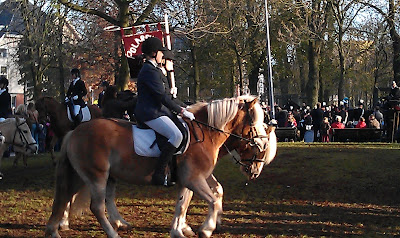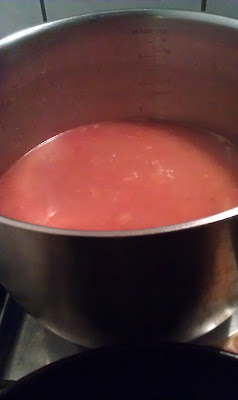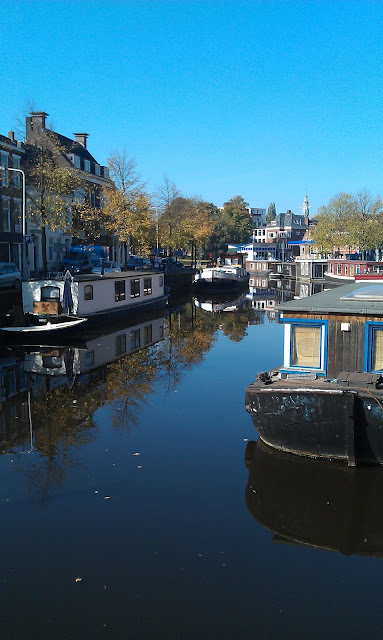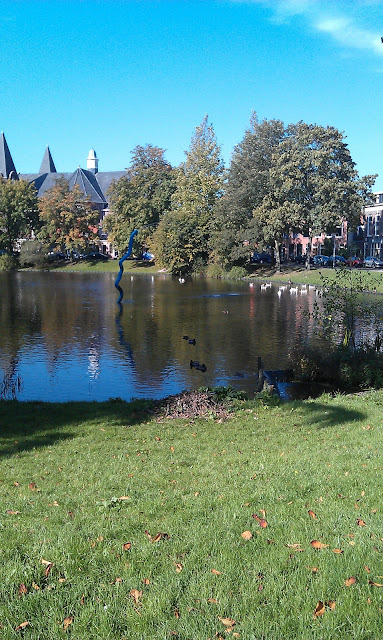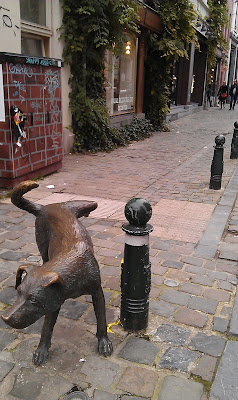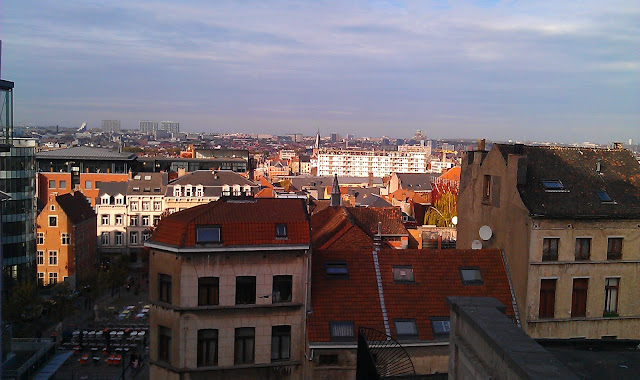My first journey outside of the Netherlands since my arrival in Groningen was a weekend trip with my husband to Brussels, Belgium. Just a 5-hour train ride from Groningen, it was very easy to set up our trip so that we would arrive on Friday night and return to Groningen on Sunday evening, while still getting to see and do a lot in Brussels.
On Saturday morning, we were up bright and early so that we would arrive at the
Cantillon Brewery when it opened at 10:00 AM. We'd heard that this is the place to learn about the lambic, geuze, and kriek beer-making processes, and we were not disappointed. We learned that lambic beer is unique because yeasts are not added during the brewing process; rather, the beer is exposed to the yeasts that are naturally-occurring in the air overnight before being stored in barrels. This is known as "spontaneous fermentation." The result is some very sour and very tasty beer! Here are a few photos we snapped during the tour:
 |
| The hop boiler |
 |
| Organic cereals |
 |
| The big, flat copper vat in which the wort is exposed to the natural yeasts at the brewery | |
 |
| Framboise, Lambic Grand Cru, and Kriek |
Something that became clear to us during our tour of Cantillon Brewery, is that they are very dedicated to producing their beer in a responsible manner. They use organically grown cereals and they control insects that are attracted to the fermenting beer by respecting the spiders living in the brewery - allowing the arachnids to do the pest-control duties naturally.
After our brewery tour, we headed over to
Den Teepot, which is a vegetarian (almost entirely vegan) restaurant west of the Grand Place. My husband and I are both vegetarians (I'm vegan), so we were very excited to find out about Den Teepot. The restaurant is above a health food store, so it was a little bit difficult to find, but the search was worth it. We both had heaping plates of vegan deliciousness that would prepare us for a long day of wandering Brussels, sampling chocolates, and drinking great beer.
 |
| Vegan lunch at Den Teepot - delicious! |
After lunch, we took a long meandering walk around Brussels, and then went sight-seeing on the Grand Place and window-shopping at the various fine chocolate shops. We also paid a visit to the famous peeing-boy statue, known as Manneken Pis. Here are some favorite photos:
 |
| The Grand Place |
 |
| Window-shopping at the chocolate shops on and around the Grand Place |
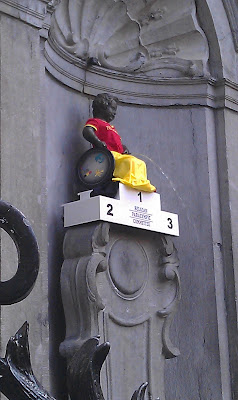 |
| Manneken Pis, dressed up in honor of the Belgian Paralympics Committee |
For dinner, we met up with a dear friend who was in town after a conference. This meal was at another vegetarian restaurant, known as
Slurps, in the Ixelles neighborhood. Slurps serves dishes representing cuisines from all over the world, beautifully presented and very tasty. It was a little off the tourist track, but definitely worth the journey.
After dinner, we decided to increase our knowledge of Belgian brews at
Moeder Lambic, a hip bar that had a large range of brews from hoppy to malty, and light to strong.
On Sunday, we had brunch at
Le Pain Quotidien, where the chocolate spreads are plentiful and the vegan dishes are all helpfully marked on the menu (which is available in French, English, and Flemish). It is a very affordable place because one can order small dishes a la carte. The rest of Sunday was spent wandering Brussels and taking in its many parks and cityscapes, before heading home to Groningen. Some more photos:
 |
| Many of the buildings in Brussels are adorned with scenes from beloved comic strips. It was a lot of fun spotting them on our walks around the city. |
Here are some cost-saving tips that we learned along the way: To keep costs down, we booked a "weekend return" deal through the
NS Hispeed web site and found a good hotel deal at the Sofitel Le Louise on
Booking.com. We found that Brussels is actually a pretty affordable place to visit as there is a lot of free or low-cost stuff to do there. Our brewery tour cost only 6 euros each, which included a couple of glasses of beer at the end of the tour. A walk on the Grand Place is free, and window shopping for Belgian chocolates is also free - if you can resist the urge to buy them. As you can see from our photos, Brussels also has quaint parks, great views, and public art that can all be accessed free of charge. Food was the major expense, but we found the prices to be quite reasonable given the generous portions.
Cheers!



